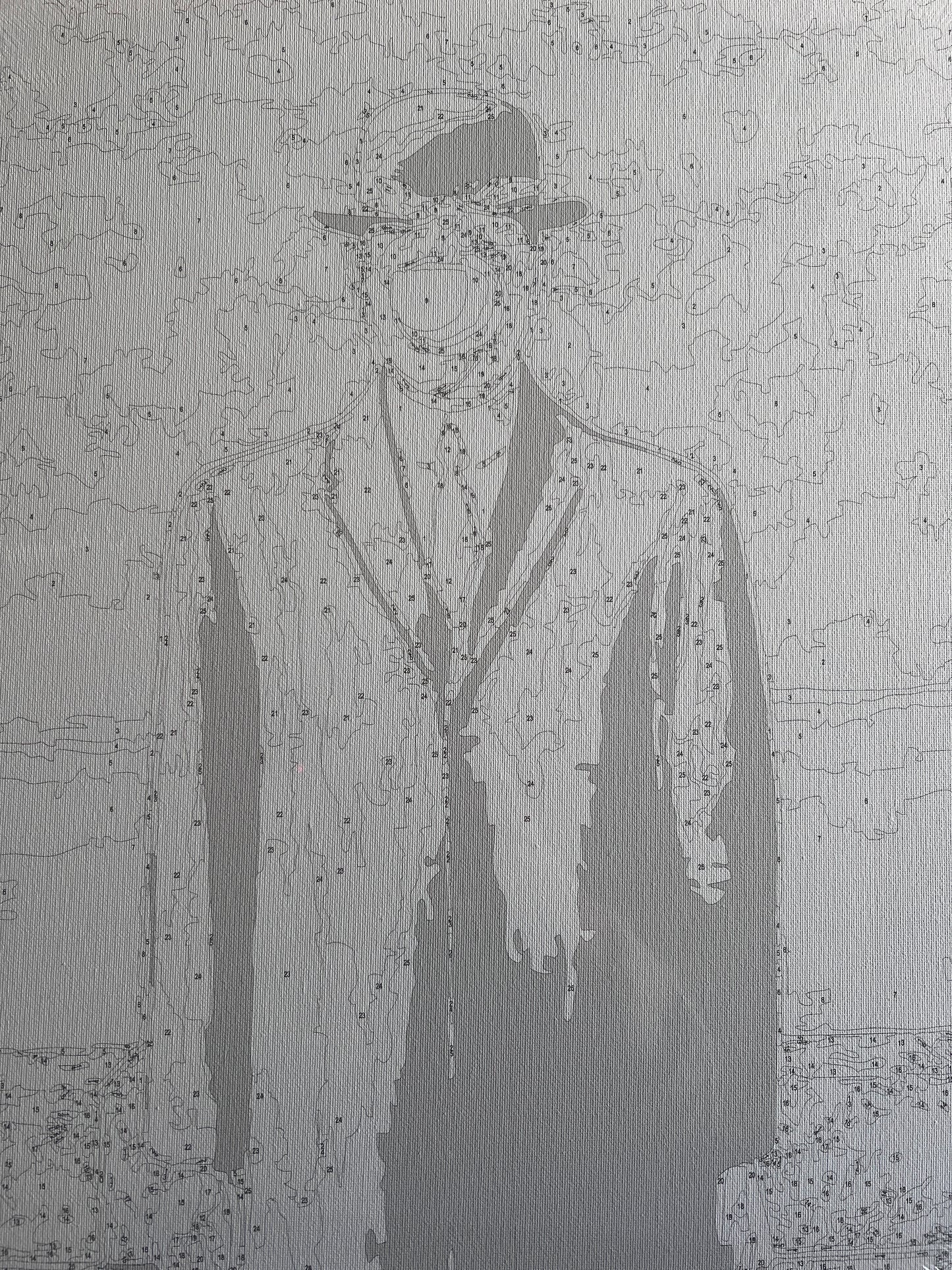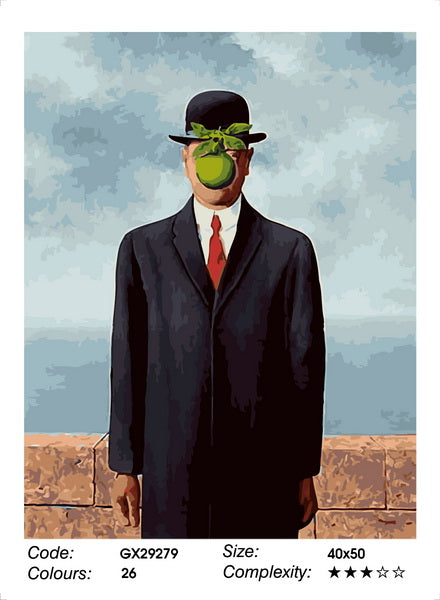Paint by Numbers
The Son of Man
The Son of Man
Couldn't load pickup availability
Rene Magritte painted this painting in 1946 and is seen by many critics as a self portrait. He often dressed in exactly this way, bowler hat, black suit, red tie. 'The painting consists of a man in an overcoat and a bowler hat standing in front of a short wall, beyond which is the sea and a cloudy sky. The man's face is largely obscured by a hovering green apple. However, the man's eyes can be seen peeking over the edge of the apple. Another subtle feature is that the man's left arm appears to bend backward at the elbow.
Magritte specialised in bringing a surreal aspect into his paintings, in order to emphasise something he felt was very true about ordinary life. His paintings were often intriguing and seemed filled with symbols, almost dreamlike. He questioned the ordinary, things we accept as true. This is what he said about this painting:
"At least it hides the face partly. Well, so you have the apparent face, the apple, hiding the visible but hidden, the face of the person. It's something that happens constantly. Everything we see hides another thing, we always want to see what is hidden by what we see. There is an interest in that which is hidden and which the visible does not show us. This interest can take the form of a quite intense feeling, a sort of conflict, one might say, between the visible that is hidden and the visible that is present."
'Magritte had many recurring themes or objects that he placed in his compositions. The most famous is undoubtedly the bell, a kind of black ball, or the bird. Another recurring theme is the apple, always green and intact. It often serves as the subject or crucial object of the painting. Here, it hides the face of the character, transforming a mundane portrait into something entirely different. It induces a feeling of frustration in the viewer, as it conceals the face.
'This apple is a reference to the apple from the Garden of Eden, which embodies sin, temptation, but also the mortal condition of human beings. This somewhat religious orientation fits well with the title of the artwork, The Son of Man, a direct reference to Christ, and which translates to "son of Adam," once again referring to original sin.'
Our 40 x 50cm version of his striking painting is not too challenging and has 26 colours. Each box contains a stretched, printed and numbered canvas, paint, brushes and a page detailing the numbers for an extra reference.
https://www.renemagritte.org
https://www.riseart.com/article/2699/masterpiece-in-the-spotlight-the-son-of-man-magritte




Paint by Numbers
Create with confidence and let your inner artist shine!



